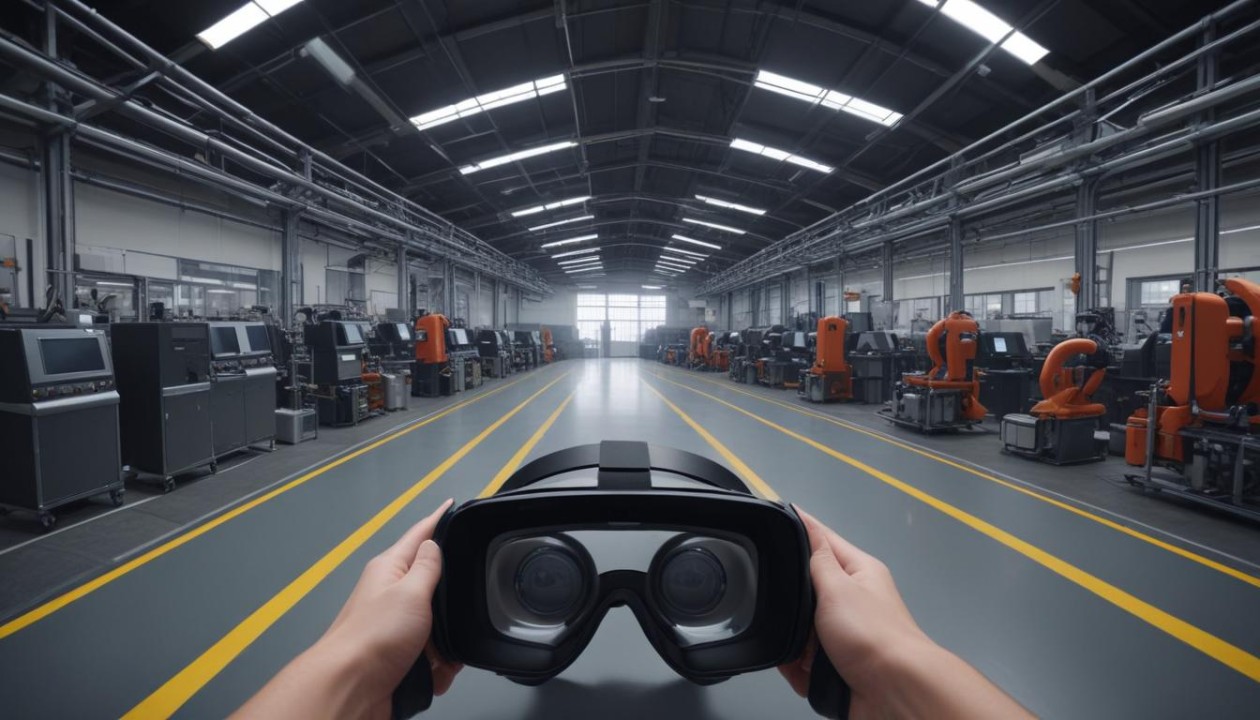Next-gen Tradeshow Experiences: VR Factory Walkthroughs with 360 Videos and Panoramas
Virtual Reality (VR) and 360-degree videos (and 360 Panoramas) are transforming how businesses present their factories at tradeshows. Traditionally, showcasing a factory’s capabilities required detailed presentations, static images, and perhaps some video footage. However, VR and 360 videos now offer immersive, interactive experiences that transport potential clients and partners directly to the factory floor, no matter where they are. This innovation is not only revolutionizing how companies market themselves but also enhancing the overall experience for tradeshow attendees.
The Concept of VR Factory Walkthroughs with 360 Videos
A VR factory walkthrough using 360 videos provides an immersive, panoramic view of a factory environment. Attendees at tradeshows can don VR headsets and be instantly transported into a lifelike representation of a factory, where they can explore production lines, inspect machinery, and observe workflows as if they were physically present. This method combines the best aspects of VR and 360-degree videography to create a compelling and informative experience.
Advantages of VR Factory Walkthroughs at Tradeshows
Immersive Experience
One of the most significant benefits of VR factory walkthroughs is the immersive experience they provide. Traditional methods of showcasing a factory often fail to convey the scale, complexity, and operational dynamics effectively.
- Realistic Representation: 360 videos offer a detailed, high-resolution view of the factory, making the virtual walkthrough highly realistic. Attendees can see the factory layout, machinery in action, and even interact with virtual elements.
- Engagement: VR experiences are inherently more engaging than static displays or traditional videos. The interactive nature of VR keeps attendees captivated and allows them to explore areas of interest at their own pace.
- First-Person Perspective: VR headsets provide a first-person perspective, giving users the sense of being present in the factory. This perspective is invaluable for understanding the spatial arrangement and operational flow.
Enhanced Marketing and Sales
Using VR factory walkthroughs at tradeshows can significantly boost a company’s marketing and sales efforts. This innovative approach demonstrates a commitment to cutting-edge technology and provides a memorable experience for potential clients and partners.
- Differentiation: In a crowded tradeshow environment, standing out is crucial. VR walkthroughs attract attention and differentiate a company from competitors who rely on more traditional methods.
- Showcasing Capabilities: VR allows for a comprehensive showcase of a factory’s capabilities. Complex machinery, automated processes, and intricate workflows can be demonstrated effectively, providing a clear understanding of the factory’s strengths.
- Emotional Connection: Immersive experiences create a stronger emotional connection. Attendees who experience a VR walkthrough are more likely to remember the company and feel a deeper connection to its brand.
Accessibility and Convenience
Transporting potential clients and partners to a factory site can be logistically challenging and costly. VR factory walkthroughs eliminate these barriers by bringing the factory to the tradeshow.
- Global Reach: Companies can showcase their factories to an international audience without the need for physical travel. This global reach is particularly beneficial for attracting overseas clients and partners.
- Time Efficiency: A VR walkthrough can be experienced in a fraction of the time it would take for a physical site visit. This efficiency allows attendees to explore multiple factories within the limited timeframe of a tradeshow.
- Cost Savings: Reducing the need for travel and physical tours results in significant cost savings. Companies can invest these savings into improving their VR presentations and enhancing other aspects of their tradeshow presence.
Interactive and Informative
VR factory walkthroughs can be enhanced with interactive elements and additional information to create a richer experience.
- Guided Tours: VR can include guided tours with virtual avatars or narrators explaining different sections and processes of the factory. This guidance ensures that attendees gain a thorough understanding of the factory’s operations.
- Interactive Elements: Attendees can interact with virtual objects, such as clicking on machinery to learn more about its functions or viewing detailed descriptions of specific processes.
User Experience Design
Designing the user experience (UX) for VR factory walkthroughs involves careful consideration of how users will navigate and interact with the virtual environment.
- Intuitive Navigation: The VR experience should be easy to navigate, with clear prompts and controls. Users should be able to move through the factory, access information, and interact with elements effortlessly.
- Immersive Elements: Adding immersive elements such as spatial audio and realistic animations enhances the sense of presence and engagement.
- Accessibility: Ensuring that the VR walkthrough is accessible to a diverse audience, including those with varying levels of VR experience, is crucial. Providing options for different interaction methods (e.g., gaze-based, controller-based) can help achieve this.
VR factory walkthroughs with 360 videos are revolutionizing how companies showcase their capabilities at tradeshows. By providing immersive, interactive, and highly informative experiences, VR technology enhances marketing efforts, engages attendees, and offers a realistic glimpse into factory operations.
Embracing VR factory walkthroughs is not just a technological upgrade but a strategic move towards more effective, engaging, and impactful marketing. Companies that invest in this innovative approach are likely to see significant benefits in terms of brand differentiation, client engagement, and overall success at tradeshows. The future of industrial showcases is undoubtedly immersive, and VR is leading the way.




